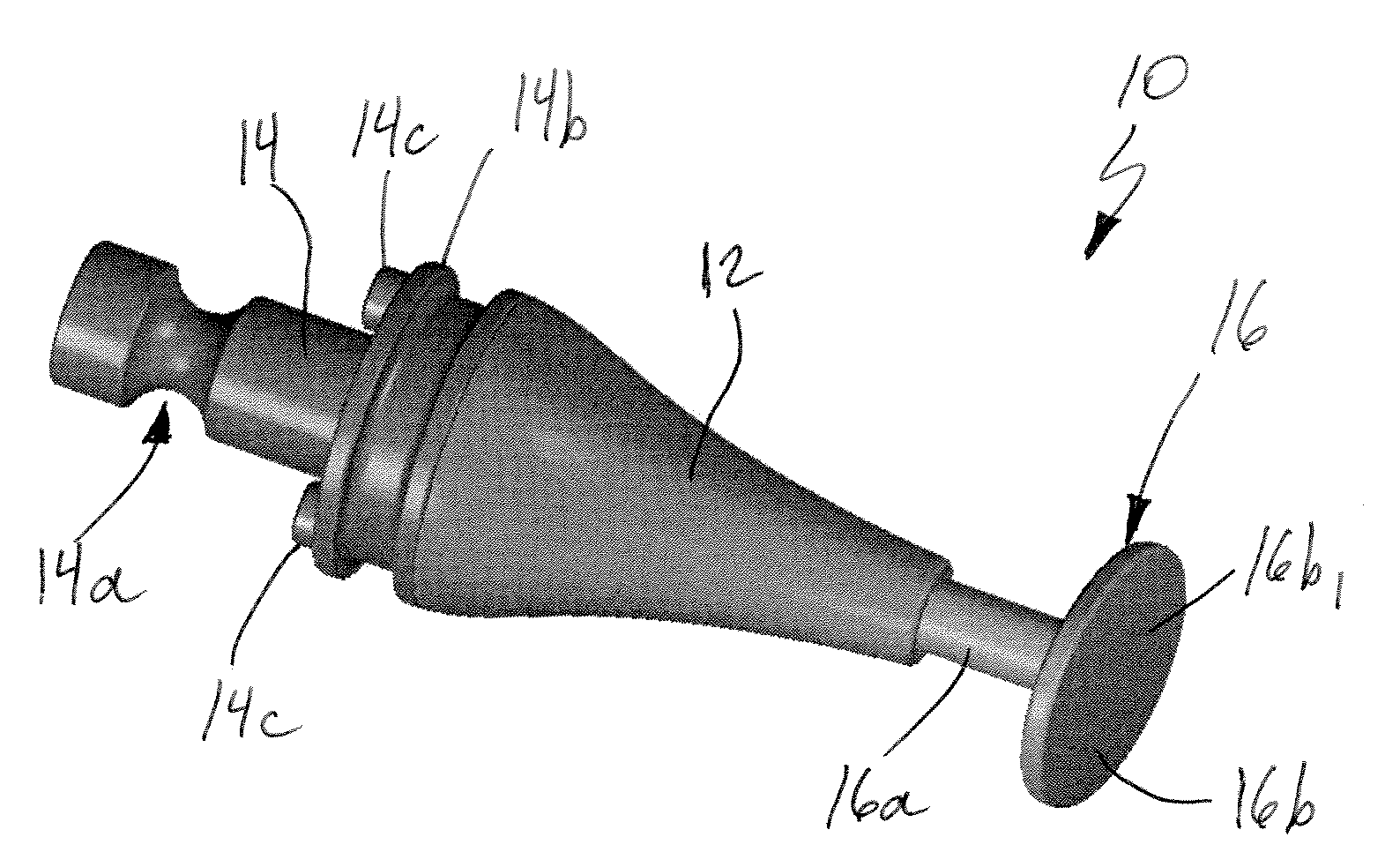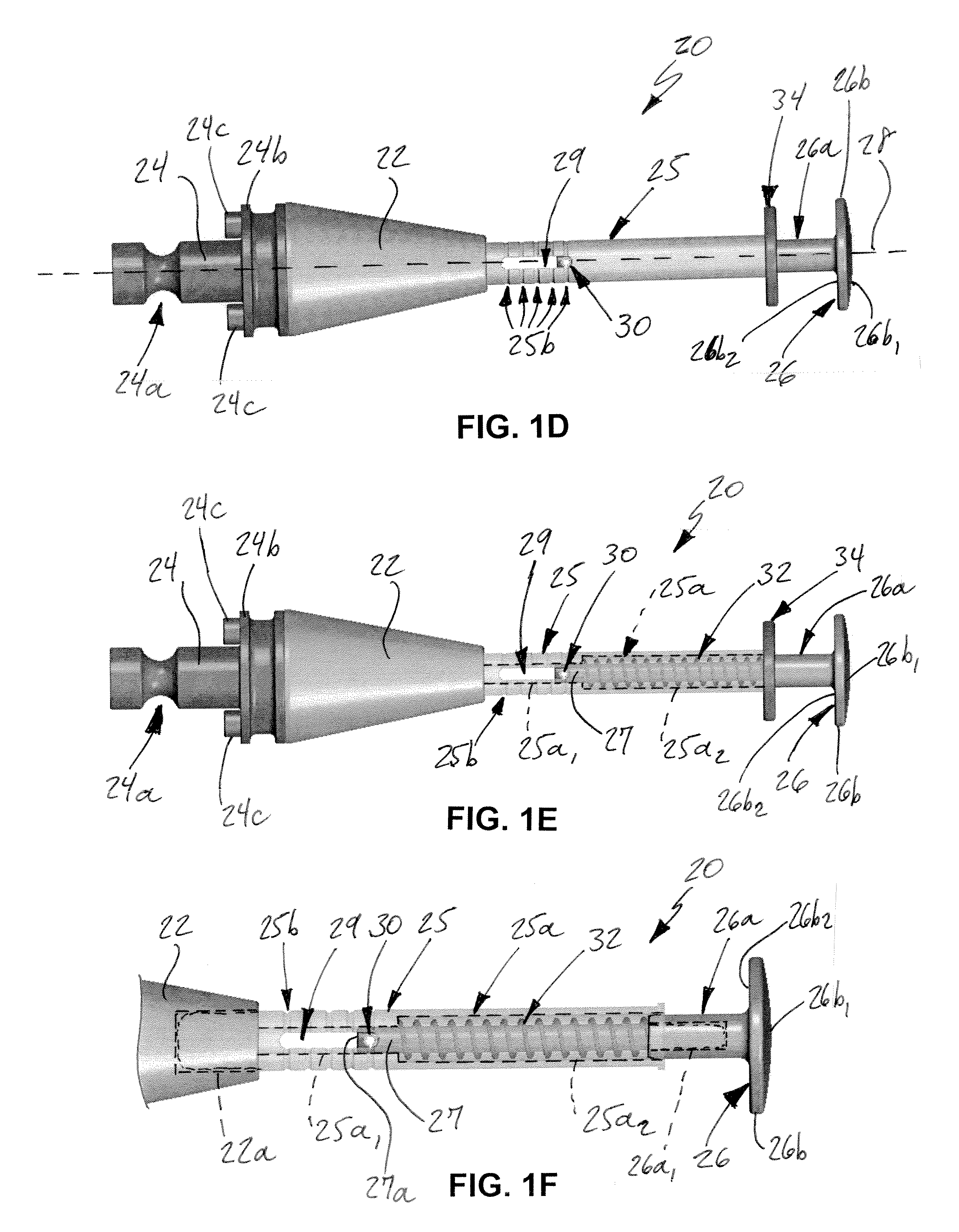Device and Method for Vascular Tamponade Following Percutaneous Puncture
a technology of vascular tamponade and percutaneous puncture, which is applied in the field of devices and methods for vascular tamponade following percutaneous puncture, can solve the problems of posing additional risks, difficult to achieve, and relatively expensive, and achieves optimal results
- Summary
- Abstract
- Description
- Claims
- Application Information
AI Technical Summary
Benefits of technology
Problems solved by technology
Method used
Image
Examples
Embodiment Construction
[0031] Words of orientation as used herein such as “front,”“back” and “top” are used for exemplary convenience only as non-limiting examples of the orientation of features and are not intended to have any particular limiting effect.
[0032] Referring initially to FIGS. 1A-1C, an exemplary embodiment of a vascular compression device 10 according to the present invention is shown. Device 10 includes a body 12 with a coupling portion 14 at a first free end thereof. Coupling portion 14 optionally may include a circumferential groove 14a therein. Body 12 may be demountably attached to coupling portion 14 proximate base portion 14b using screws 14c. Coupling portion 14 preferably is configured to be coupled to an articulating arm assembly as will be described later. A compression portion 16 is demountably coupled to a second free end of body 12. Compression portion 16 includes a stem 16a that is configured and dimensioned to be received and secured for example by friction fit in a hole 12a...
PUM
 Login to View More
Login to View More Abstract
Description
Claims
Application Information
 Login to View More
Login to View More - R&D
- Intellectual Property
- Life Sciences
- Materials
- Tech Scout
- Unparalleled Data Quality
- Higher Quality Content
- 60% Fewer Hallucinations
Browse by: Latest US Patents, China's latest patents, Technical Efficacy Thesaurus, Application Domain, Technology Topic, Popular Technical Reports.
© 2025 PatSnap. All rights reserved.Legal|Privacy policy|Modern Slavery Act Transparency Statement|Sitemap|About US| Contact US: help@patsnap.com



